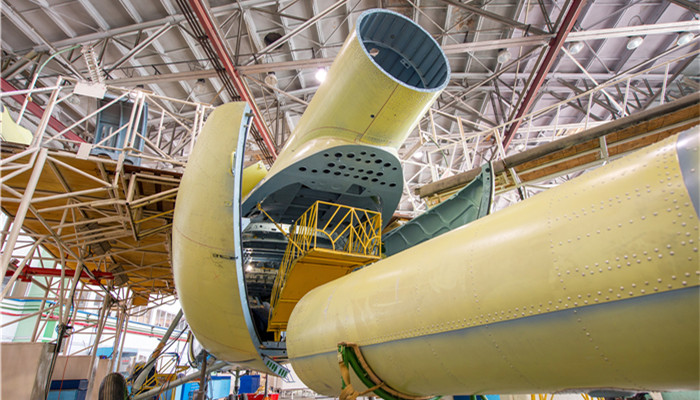
Environmental barrier coating is a new type of high-temperature protective coating. Technical research is still in depth.
Environmental barrier coating is a type of high-temperature protective coating for the hot end parts of aero-engines. It is coated on the surface of high-temperature structural parts of aero-engines. Its function is to establish a barrier between high-temperature structural parts and the harsh working environment to prevent or reduce the high-temperature environment. Impact on component performance.
Environmental barrier coating is a new generation of high-temperature protective coating, mainly used to protect silicon carbide ceramic matrix composite materials. As the flight speed and passenger capacity of aircraft continue to increase, large thrust-to-weight ratios have become the development trend of aero-engines. The working environment temperature of aero-engines continues to increase. Hot-end components made of high-temperature alloys are gradually unable to meet the requirements. In addition to the advantages of silicon carbide ceramic matrix composites, In addition to the advantages of high-temperature alloys, they have better high-temperature resistance, light weight, high strength, and impact resistance, making them an important material for manufacturing aero-engine components. In a high-temperature water vapor environment, the surface stability of silicon carbide ceramic matrix composites decreases sharply, requiring environmental barrier coatings for protection.
According to the “In-depth Market Research and Investment Strategy Suggestions Report on Environmental Barrier Coating Industry 2022-2026” released by the Industrial Research Center, The environmental barrier coating cannot chemically react with the substrate. The thermal expansion coefficient must be similar to the substrate, and the structure must be stable and the oxygen permeability is low. The main materials that can be used include mullite, BSAS, rare earth silicates, etc., and the products that are being developed are Among them, multi-layer environmental barrier coatings have better performance than single-layer environmental barrier coatings in terms of thermal insulation, high temperature resistance, and corrosion resistance. Mullite’s thermal conductivity and oxygen transmittance are low, and its thermal expansion coefficient is close to that of silicon carbide. However, its resistance to high-temperature water vapor erosion is weak, and its reliability when used alone as an environmental barrier coating is poor.
BSAS coating is generally used in combination with mullite to create a multi-layer environmental barrier coating. Mullite + BSAS is used as the middle layer, BSAS or Re2Si2O7/Re2SiO5 is used as the surface layer, and Si is used to bond between them. These materials match It has good performance, high product reliability and long service life, but when working in a water vapor environment above 1300°C, the effect and service life will decrease rapidly.
Rare earth silicate has better performance in terms of high temperature stability and thermal expansion coefficient. It is a new type of environmental barrier coating material that matches the physical and chemical properties of mullite and BSAS. It can be used to manufacture multi-layer environmental barrier coatings with different structures. The product can work in different temperature environments, generally 1315℃ or 1482℃. Rare earth silicate can be used as an intermediate layer or as a surface layer, but when used as a surface layer material, cracks will occur. At present, research on rare earth silicate environmental barrier coatings is still in depth in terms of material selection, technical processes, and applications.
Industry analysts said that the purpose of the development of environmental barrier coatings is to be used as a protective layer for silicon carbide ceramic matrix composites. Aeroengine hot end component surface. At present, the environmental barrier coating products that have been developed and launched still have shortcomings in performance, such as reduced reliability and service life in high-temperature water vapor environments. However, they are comparable to diffusive coatings, cladding coatings, and thermal barrier coatings. Compared with other coatings, some of its properties have unique advantages and are one of the important development directions of high-temperature protective coatings in the future. The scale of my country’s aerospace industry continues to expand, and the demand for high-temperature protective coatings will continue to grow. The research and development and production of environmental barrier coatings are of prominent importance.

 微信扫一扫打赏
微信扫一扫打赏

